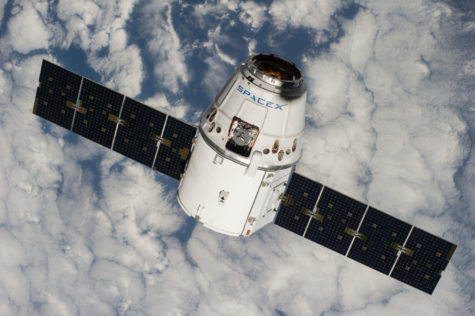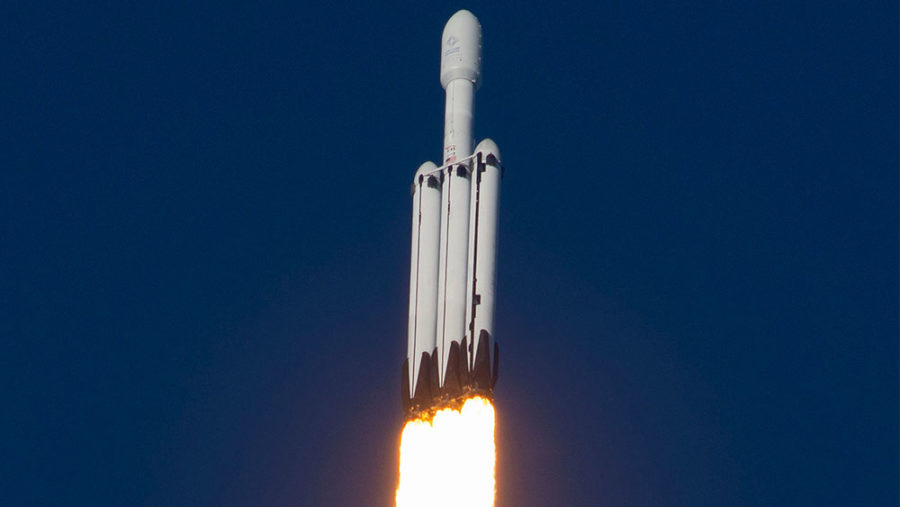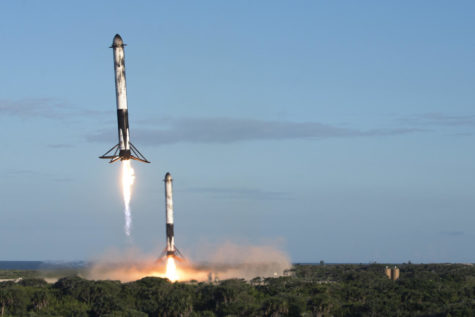SpaceX’s Falcon Heavy Successfully Launches on its Second Flight While Crew Dragon Suffers a Significant Setback
The second flight of SpaceX’s Falcon Heavy was the first as a Block 5 and successfully landed all three boosters, then on April 20, an anomaly occurred with Crew Dragon, which led to some effects to the CRS-17 launch
The LM 2100 series satellite called Arabsat-6A satellite was built by aerospace manufacturer Lockheed Martin on behalf of the Saudi Arabian company Arabsat. A single Falcon 9 can launch the satellite; however, the Arabsat already had signed a contract for the launch of the satellite in 2015. This was before the Falcon Heavy had even flown and when the Falcon 9 had less launch capability.
Falcon Heavy was rolled out from the Horizontal Integration Facility (HIF) to Launch Complex-39A (LC-39A) using the Transporter Erector (TE). The TE then raised the spacecraft to the upright position on the pad as standard for all SpaceX launches out of LC-39A. As usual, the static fire for Falcon Heavy occurred prior to the first launch attempt.
The first launch attempt for the Arabsat mission occurred on Wednesday, April 10. However, the launch was pushed back to the end of the planned one hour and 57 min launch window. But, relatively high upper level winds caused SpaceX to scrub the launch attempt for the evening. SpaceX then reset the countdown clock for the same time the next day, April 11.
The 27 Merlin Engines on the Falcon Heavy roared to life at 6:35 ET EDT on April 11. The world’s most powerful operational rocket rapidly departed LC-39A and climbed skyward. The launch was the first Falcon Heavy launch with improved Block 5 boosters.
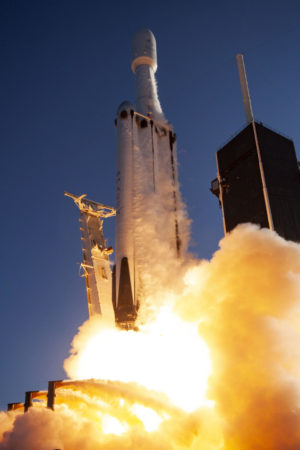
A Falcon Heavy is basically a Falcon 9 first stage booster with two other boosters attached to the side. The two side boosters are basically Falcon 9 core boosters with nose cones on the top instead of an interstage. The Falcon Heavy core booster (the middle core) is strengthened to structurally handle two side boosters. However, there is many more technical differences between Falcon 9 and Falcon Heavy that usually go unnoticed. Like the Falcon 9, Falcon Heavy runs on Liquid Oxygen or LOX and RP-1 (kerosene). The center core was numbered B1055, while the side boosters were numbered B1053 and B1052.
About two and a half minutes after launch, the two side boosters were jettisoned. They then performed a boostback burn to prepare for landing. The core booster throttled up and continued to travel further downrange from Kennedy Space Center (KSC). After the three-minute mark, the core booster shut down and the second stage separated and ignited its single Merlin vacuum optimized engine.
The two side boosters reentered the atmosphere and executed a simultaneous landing at Landing Zone-1 (LZ-1) and Landing Zone-2 (LZ-2) at Cape Canaveral Air Force Station around eight minutes after launch. Later, the core booster successfully landed on the droneship “Of course I Still Love You”, which was stationed around 1,000 km downrange from KSC in the Atlantic Ocean. This was the first time ever that SpaceX has landed all three boosters for a Falcon Heavy.
Later on, the fairings were jettisoned and the Arabsat-6A satellite was successfully delivered to a Geosynchronous Orbit. Arabsat 6A will serve the Middle East, Europe, and Africa for TV and communication purposes. The satellite will somewhat partner with the Hellas Sat 4/SaudiGeoSat-1 satellite which was previously launched earlier this year on the Arianespace Ariane 5 rocket. After a flawless launch and overall mission, SpaceX secured a contract for what will be the first asteroid redirect mission by NASA.
While the fairings were successfully recovered in the Atlantic, the Falcon Heavy core booster toppled over due to heavy seas. A decapitated Falcon Heavy core booster laying on its side onboard “Of course I Still Love You” floated into Port Canaveral under the cover of darkness many days later.
SpaceX will reuse the two side booster cores B1053 and B1052 for the next Falcon Heavy launch which will be STP-2. The Falcon Heavy core booster will be B1057, which was recently test fired for the first time at SpaceX’s test facility in McGregor, Texas. STP-2 is a mission contracted on behalf of the U.S. Dept of Defense and the U.S. Air Force. STP-2 will also launch from LC-39A and is scheduled for NET June 22, 2019, but that date is subject to change.
The first flown Crew Dragon spacecraft, C201 which was on DM-1 was scheduled to also launch on the SpaceX launch abort test in June. However, during the final countdown for a static fire of its SuperDraco abort motors on April 20, the capsule exploded. The explosion destroyed the capsule and created an orange cloud of extremely toxic hypergolic propellant. Similarly, Boeing’s CST-100 Starliner had a less explosive but similar incident in 2018 with its abort motor which is built by Aerojet Rocketdyne. Thankfully, nobody was killed or injured during the anomaly on April 20.
The older Russian Soyuz spacecraft and the retired Apollo and Mercury capsules of yesteryear were designed with a launch escape tower and powered with a solid rocket motor. But, Boeing and SpaceX are using liquid rockets integrated in either the service module and spacecraft. A launch escape tower pulls the spacecraft off a failing rocket while an integrated system pushes the spacecraft.
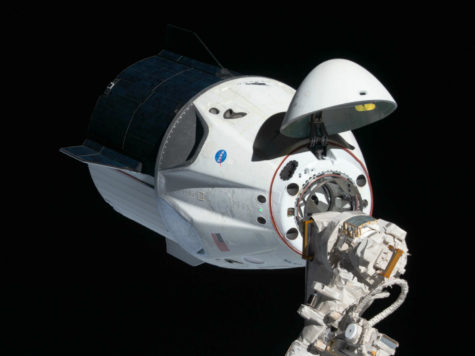
After the Crew Dragon explosion, NASA Administrator Jim Bridenstine tweeted: “NASA has been notified about the results of the @SpaceX Static Fire Test and the anomaly that occurred during the final test. We will work closely to ensure we safely move forward with our Commercial Crew Program.”
According to Spaceflightnow.com, “the firing was intended to demonstrate integrated system SuperDraco performance at two times vehicle level vibro-acoustic life for abort environments,” said Aerospace Safety Advisory Panel (ASAP) Chairwoman Dr Patricia Sanders. The SuperDraco motors are designed to push the capsule off a failing Falcon 9 booster. According to the website Teslarati, the SuperDracos fire when the oxidizer and fuel which are Nitrogen Tetroxide (NTO) and Monomethylhydrazine (MMH) come into contact with each other.
According to the Verge, “NASA and SpaceX immediately executed mishap plans per the agency and the company’s guidelines, and SpaceX is leading the investigation, with active NASA participation,” said Sanders. Sanders also said that “the investigation will take time before the root cause analysis is completed and will determine the impact to the Demo 2 and the in-flight abort test.”
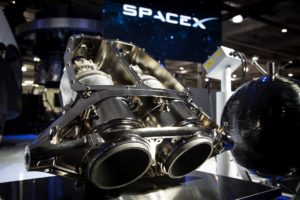
SpaceX currently builds the Dragon version 1 spacecraft and Crew Dragon (originally called Dragon V2). Dragon is built to fly to and from the International Space Station (ISS). Over a period of nine years 17 Dragon spacecraft have flown to space. Unlike the Crew Dragon, Dragon only has Draco thrusters for RCS control. Dragon has traditional solar arrays and like the Northrop Grumman Cygnus spacecraft, has to be captured by the Canadarm 2 on the ISS and is berthed to a port on the American segment by the robotic arm. Crew Dragon autonomously docks to the ISS via the International Docking Adaptor.
Since the SpaceX Crew Dragon explosion occurred adjacent to both LZ-1 and LZ-2, at least LZ-1 is contaminated with hypergolic toxins. The Dragon CRS-17 will launch from SLC-40 and will have a Falcon 9 booster landing on the droneship “Of Course I Still Love You” instead of LZ-1 or LZ-2 at Cape Canaveral Air Force Station.
CRS-17 will deliver around 5,500 pounds of cargo to the Expedition 59 astronauts and cosmonauts on the ISS. Included with the cargo will be experiments such as the Orbiting Carbon Observatory-3, Photobioreactor, and the Pharmaceutical Nanoparticle Formulation experiment. This is the first CRS mission since the Falcon 9 booster water landing in December of 2018 on CRS-16. The spacecraft scheduled to fly on CRS-17 is the same Dragon that flew on CRS-12 in 2017. CRS-17 is the first flight for the Falcon 9 booster B1056. As of publication, the launch is scheduled for May 3, at 3:12 AM EDT.
